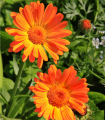Easy to grow, colorful, and nutritious. Tolerant of cool and warm temperatures and a very prolific producer of tasty green leaves on multi-colored stalks. Great for beginner and advanced gardeners alike.
Spires of Lupins in shades of blue and bluish-purple are a welcome sign in spring. Lupins are an important source of nectar for pollinators. The flowers will bloom all summer and return to delight with another stunning display the following year. Prefers sandy soil and will grow in North American regions Zones: 3-9. Lupins prefer full sun but will grow in light partial shade. Will withstand a certain amount of drought. Beneficial for butterflies.
Introduction
Lupin (Lupinus perennis) is a perennial flowering plant that is native to North America. It is known for its showy clusters of blue, purple, or white flowers. Lupins are a popular choice for gardens because they are easy to care for and attract pollinators.
Summary
- Lupin (Lupinus perennis) is a perennial flowering plant.
- It is native to North America.
- It has showy clusters of blue, purple, or white flowers.
- It is easy to care for and attracts pollinators.
What does Lupin (Lupinus perennis) look like?
- Lupins have tall, upright stems that can grow up to 2 feet tall.
- The leaves are palmately compound, with 7-11 leaflets.
- The flowers are pea-like and are arranged in spikes or racemes.
- The flowers can be blue, purple, white, or yellow.
Why should I plant Lupin (Lupinus perennis)?
- Lupins are easy to care for.
- They are drought tolerant and can thrive in poor soil.
- They attract pollinators, such as butterflies and bees.
- They can add color and interest to your garden.
Some interesting facts about Lupin (Lupinus perennis)
- Lupins are legumes, which means they can fix nitrogen in the soil.
- The flowers of Lupins can be edible.
- Lupins are used in traditional medicine to treat a variety of ailments, such as high blood pressure and kidney disease.
- Lupins are a good source of protein and fiber.
How do I germinate Lupin (Lupinus perennis)?
- Sow the seeds in the fall or early spring.
- The seeds need light to germinate, so sow them on the surface of the soil.
- Keep the soil moist but not wet.
- The seeds will germinate in 2-4 weeks.
Additional Tips
- Lupins prefer full sun, but they can tolerate partial shade.
- They prefer well-drained soil.
- Fertilize lupins with a balanced fertilizer once a month during the growing season.
- Deadhead spent flowers to encourage more blooms.
Data sheet
- Water Needs:
- Very Low, Low, Low/Moderate
- Light:
- Full Sun, Full Sun / Partial Shade
- Zones:
- Annual grow in all zones, 3, 4, 5, 6, 7, 8, 9
- Growth Cycle:
- Perennial
- Soil Type:
- Sandy Soil, Peaty Soil, Saline Soil, Chalky Soil, Loamy Soil, Silty Soil, ALL Tolerant of most soils, Clay Soil
- Edible:
- Yes, with caution
- Color:
- Purple, Blue
- Height:
- f: Up to 2 Feet
- Warnings:
- Can Cause Allergic Reaction
- Special Features:
- Fodder/Wildlife/Shelter, Ornamental, Butterfiles and Pollinators
- Growth Rate:
- Slow/Moderate, Moderate
- Evergreen
- No
Specific References
- UPC
- 810071360770
- MPN
- IT-NKP0-HYYX


































Leave a review